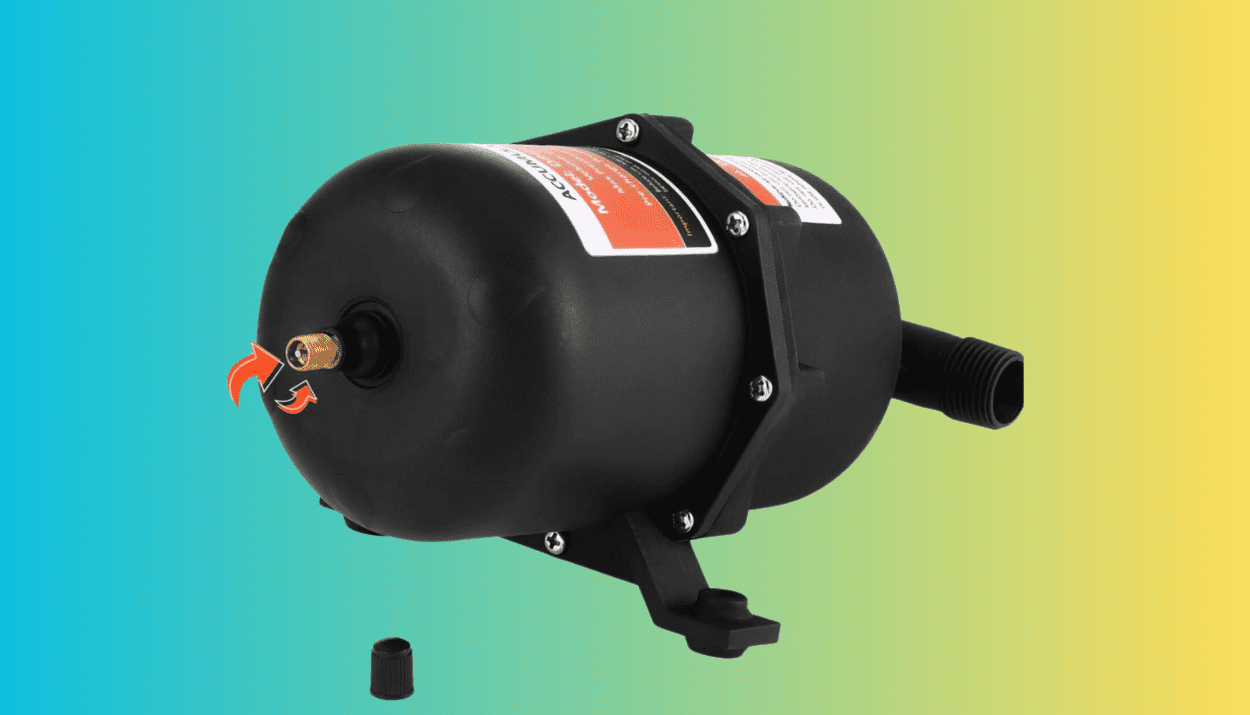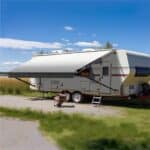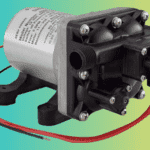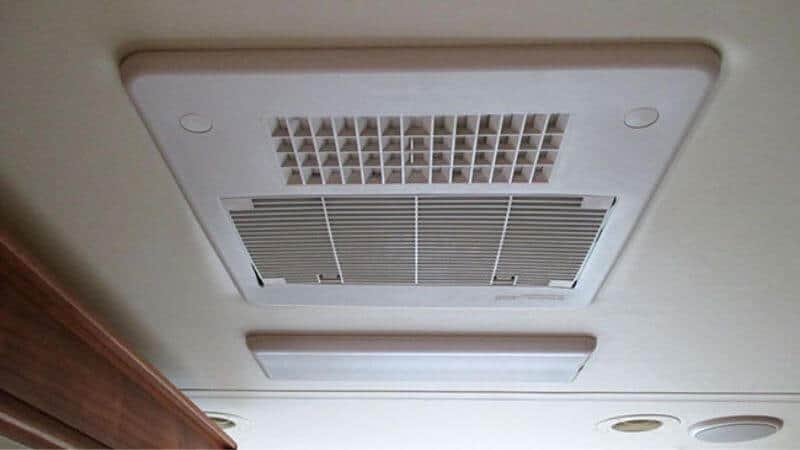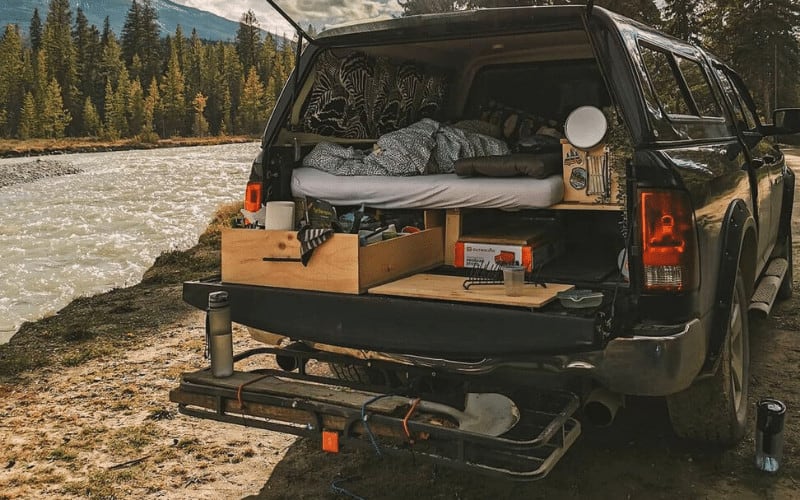Low water pressure in an RV is a significant problem whether you’re attempting to shower or wash dishes. To deal with low RV water pressure, the first step is to identify the issue.
If you are an avid RVer like me, you probably frequently find yourself needing to deal with low water pressure in an RV. Sometimes, all it takes is a trip outside to twist the water spigot, and sometimes the issue is more complicated. However, troubleshooting this issue can be frustrating if you are unsure where to begin.
If this is a situation in which you find yourself, fret not because I have the solution. In this article, I present a step-by-step guide on how to increase water pressure in an RV. Read to the end to get the answers to some of the most frequently asked questions about increasing low water pressure in an RV.
Causes Of Low Water Pressure In An RV
There are several typical causes for low water pressure in RVs, and understanding the root cause can save you time. Here are some common causes of low water pressure in an RV:
- There may be low pressure from the campground or RV park’s water supply, or your fresh water hose may be leaking.
- The water in your RV’s tank may be too low.
- You could also have a blocked water whole-house filter or a blocked inline filter that guards your water pump.
- Another possible explanation for the low water pressure in your RV is a broken 12V water pump or a broken regulator.
Steps To Increase Water Pressure In An RV
It’s a common misconception that a pressure gauge-equipped adjustable regulator may raise the water pressure. But a simple solution, like new shower heads, would serve the same function. Again, it comes down to identifying the issue before seeking a solution.
So, if you’ve been enjoying acceptable water pressure in your RV only to have it dwindle to a trickle, these are the few places to start diagnosing the problem.
Inspect The RV Water Pump

Source: Fresh Water Systems
RV water pumps are generally used to distribute water to all the taps and showers from the storage tank in your RV. And sometimes, an RV pump impacts the water flow rate, causing frustration.
A slow flow rate will likely occur if an RV pump has to transport water to taps through elbows, tees, and other fittings. Moreover, the water pressure will be affected if an RV pump fails, and the water pump could malfunction for various reasons.
A properly functioning RV water pump should move water at 3.5 to 5 GPM (gallons per minute). It should be at a pressure of 40 to 50 PSI. You’ll need a pressure gauge to effectively measure the RV water pressure.
If the performance is less than this, you may need to replace the RV water pump, which is usually a better option than trying to open the sealed housing and attempt to repair the problem, which is usually a damaged or clogged impeller. Have a look at eight best 12 Volt RV Water Pumps.
Check The Freshwater Storage Tank
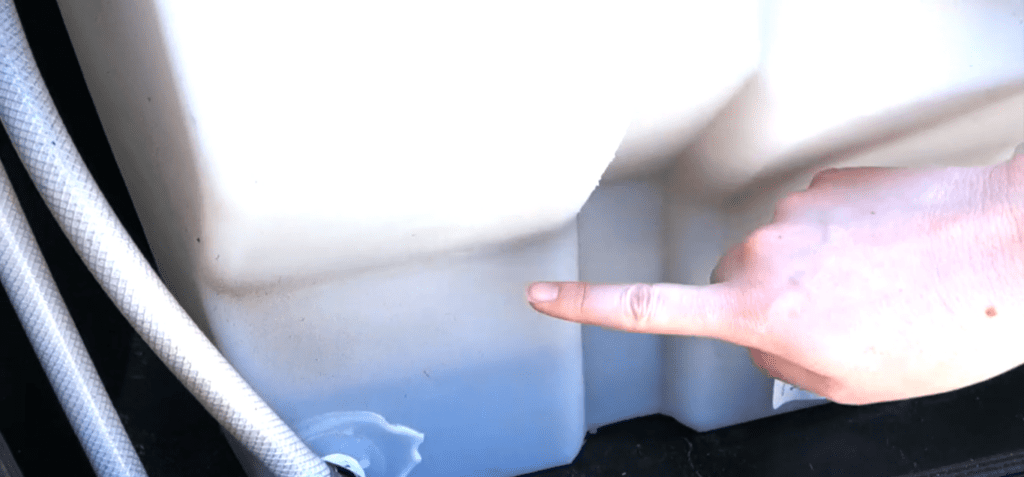
Source: RVersity
I know it sounds a little overly simplistic. Still, it’s a common issue for many people new to RV travel and perhaps got a little used to the easy access to water at home. This is especially true if your RV has a small freshwater storage tank.
However, this problem is not just for first-time RVers or those with limited water storage. When you’re preoccupied with driving, navigating, or stocking up on groceries, it’s easy to lose track of how much water is left in the tank.
The easy solution? Refill with clean water!
Check Campground’s Water Pressure
If you’re connected to RV park water instead of the storage tank, you may find the water pressure at an RV park might be awful. This might be because many RVs are hooked up to and drawing water from the system. This way, even the most powerful water pump can overload.
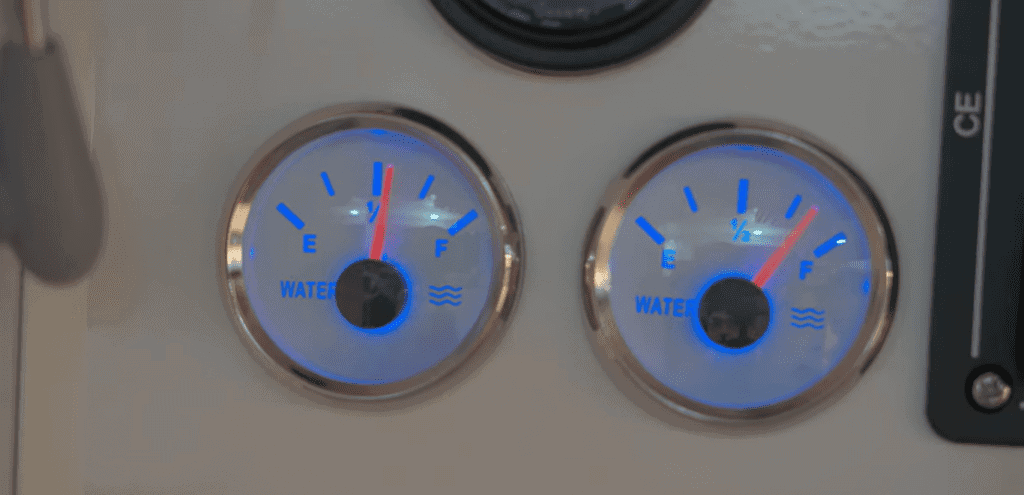
Source: Ecocampor RVs
To find out if the low water pressure results from the RV or the RV park, follow these steps:
- Make sure your freshwater storage tank is at least half full.
- Disconnect from the RV or campground’s supplied water line.
- Power up and prime your RV’s water pump.
- Turn on a single fixture as far away from the RV pump.
If the water pressure from that fixture is better than when you were connected to the outside source, it’s probably the RV park’s water pressure.
You can get through by slowly filling your RV’s fresh water storage tank to maximum capacity and using your own system.
Look For The Clog In Water Filters
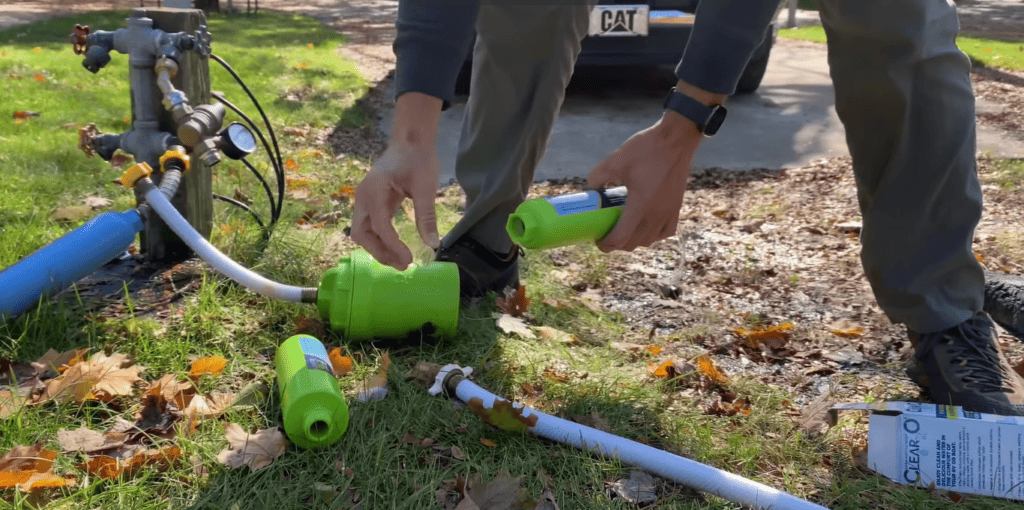
Source: Radar Road Warriors
A water filter is a must-have for an RV if you want clean drinking water when you’re away from home.
However, this means more maintenance because you should replace it every six months to clear it.
- Locate the RV’s water filter near the water pump.
- Carefully open the housing.
- Remove the filter and check for any apparent problems.
- Replace with a new filter according to your RV’s specs.
- Seal the housing and prime the freshwater system according to the RV owner’s manual.
A dirty filter may reduce water pressure, preventing water from reaching your faucets and other plumbing fixtures. In this case, you will need a booster pump to ensure sufficient pressure. It’s always important to check the filter before driving with your RV to ensure it is clean.
Check The Water Pressure Regulator
Uncontrolled water pressure can often exceed the pressure restrictions of your system and damage your water pipes, plumbing, and fixtures.
Therefore, always install a water pressure regulator to prevent damage to your RV’s pipes. A water pressure regulator regulates the flow of water entering an RV and, if necessary, reduces the pressure to a secure level. I have a separate guide for you on five best RV water pressure regulators.
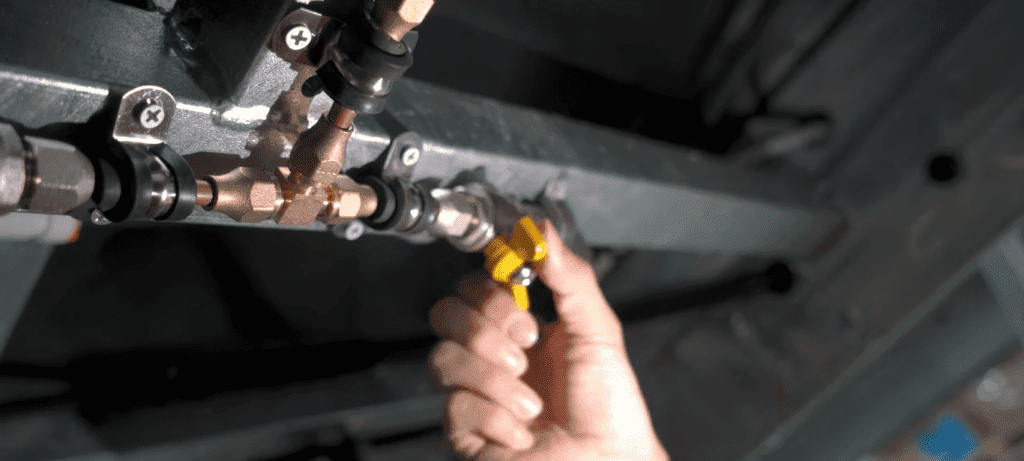
Source: Ecocampor RVs
However, low RV water pressure can also be caused by the regulator’s pressure setting. In this case, you can regulate the water pressure by rotating a small, straight-slot screw on the top or side of the regulator. But always gradually reduce the regulator’s setting to avoid exceeding your rig’s capability.
Examine The Hose
Water hoses are generally used to connect RVs to water systems when staying at campgrounds. The freshwater inlet is connected to one end of the hose and fastened onto the campground’s provided faucet.

Source: Radar Road Warriors
If the hose connecting your RV to the spigot has become bent or kinked, you will face low water pressure in your RV. Therefore, ensure there are no kinks in the water pipe leading to your rig by scrutinizing it.
Hence, when hooking up your RV to a water supply, stow any excess hose length somewhere it won’t get stepped on, run over, or chewed on by dogs.
Look For Leaks In The Water Lines
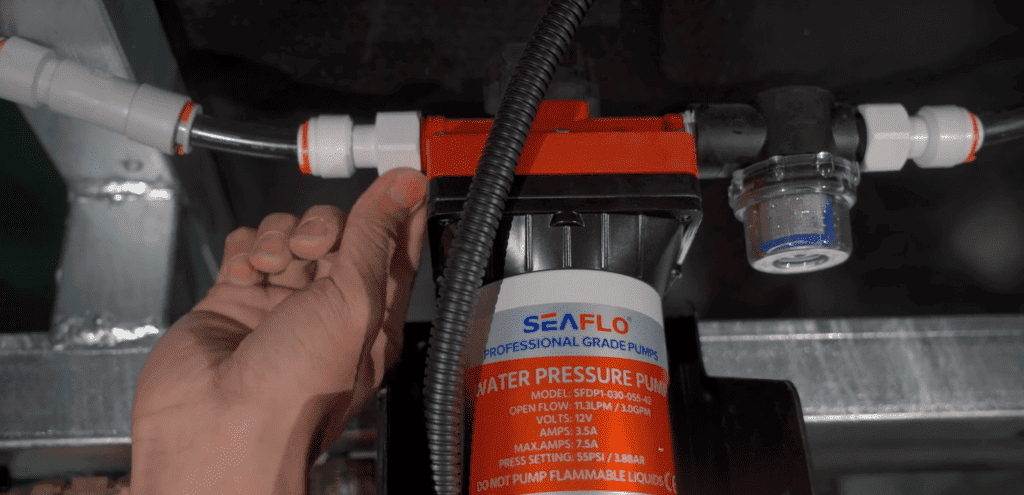
Source: Ecocampor RVs
The water lines in an RV are susceptible to cracking and leaking over time, leading to decreased water pressure. Thus, regularly check your water pipes. Fortunately, you can easily replace a water line by following these steps:
- Measure the water line length from the connection to the main line to the fixture it supports.
- Purchase the appropriate length of waterline at a hardware store. Double-check to make sure that it’s the correct diameter to match your RV’s water line.
- Turn off the power to the water pump at the breaker panel or fuse box.
- Carefully disconnect both ends of the water line and remove it. Dry any drips that come out of the various fixtures.
- Remove the waterline and dispose of it.
- Wrap any metal connections with the plumber’s tape. Then, attach the new replacement water line to the main freshwater line and the disconnected fixture.
- Tighten the pipe clamps on both ends of the water line.
- Restore power to the water pump and test the system for leaks.
FAQs
How Do You Fix Low Water Pressure In An RV?
You can identify and resolve the low water pressure issue by following these steps:
- Check for leaks in lines.
- Inspect the water pressure regulator.
- Purchase a water pump.
- Inspect the water filter regularly.
What Is The Water Pressure For An RV?
Fifth wheels and other contemporary RVs can withstand water pressure of up to 100 PSI. While little water pressure is fine, most RV experts advise keeping it below 60 PSI. However, RVs typically perform best with water pressures between 40 and 55 PSI.
Why Does RV Have Low Water Pressure?
The freshwater hose is a typical source of low water pressure in an RV. It restricts water flow into your RV if it has been kinked, pierced, or otherwise compromised. Therefore, make sure to properly inspect your hose before trying anything else.
Where Can I Find A Water Pressure Gauge?
While a water pressure gauge might not be what you use daily, it’s easy to find. Most hardware stores and even auto parts stores will have them in stock. You can use it to gauge the PSI pressure of the water in your RV’s fresh water lines.

